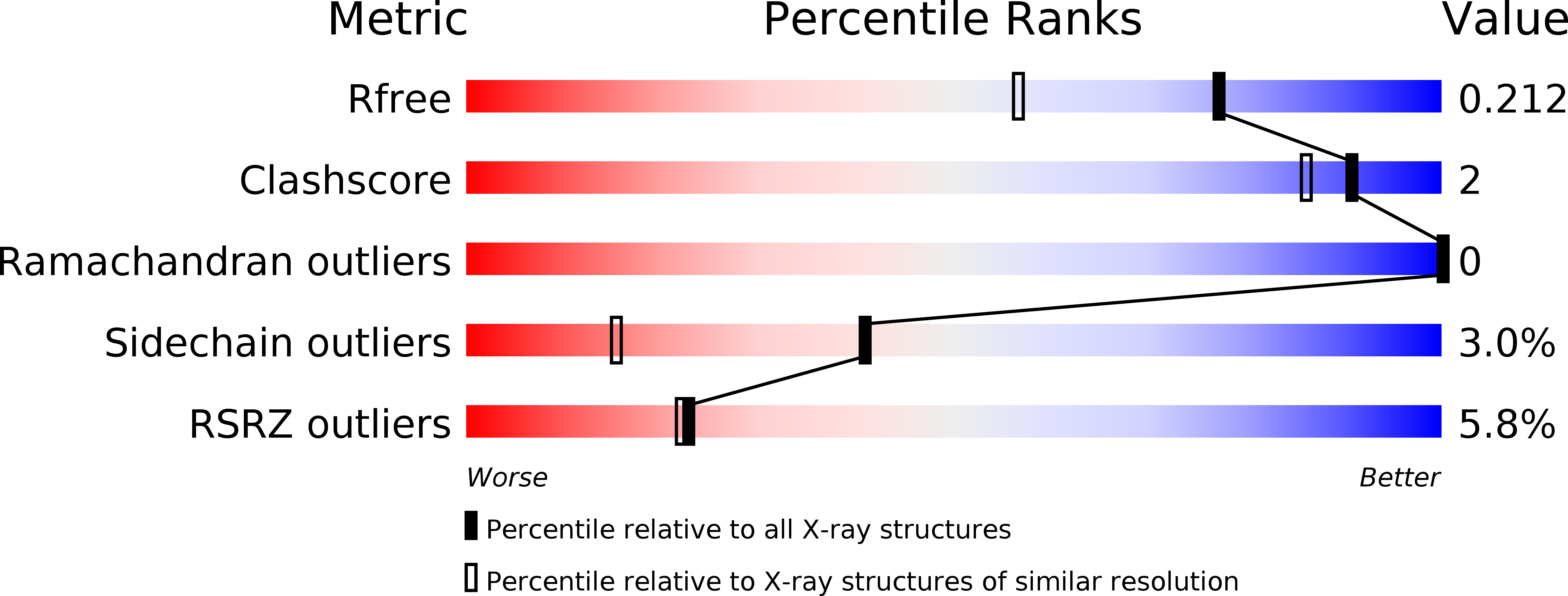
Deposition Date
2018-01-08
Release Date
2018-02-14
Last Version Date
2024-11-20
Entry Detail
PDB ID:
5Z3S
Keywords:
Title:
Crystal structure of butanol modified signaling protein from buffalo (SPB-40) at 1.65 A resolution
Biological Source:
Source Organism:
Bubalus bubalis (Taxon ID: 89462)
Method Details:
Experimental Method:
Resolution:
1.65 Å
R-Value Free:
0.20
R-Value Work:
0.16
R-Value Observed:
0.16
Space Group:
P 21 21 21


